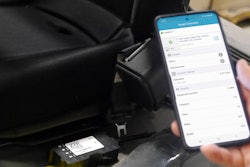
Today’s equipment generates so much data it can be overwhelming to figure out how to use it most effectively. Where should you start? What’s most important? How can you get the biggest impact with the least amount of effort? Good news: You don’t have be a data analyst to turn machine information into money-saving action. Here’s what could be hiding inside some of your most easy-to-access data:
1. Fuel savings
You’ve heard this stat before: Idle time can account for as much as 40% to 50% of total machine run time. That’s fuel burned with no money earned. Use your data to get a handle on your operation’s run-versus-idle numbers. Tools like My.Cat.Com and VisionLink make it easy to generate comparisons showing exactly when and where machines are idling most often, so you can take immediate action (training operators, reassigning equipment, etc.) to drive down idle time and fuel consumption.
2. Repair-before-failure opportunities
Fuel data can give you insights into more than idle time. Keep a close eye on fuel consumption numbers for individual machines. If they go up suddenly — and the operator’s task hasn’t changed — that’s a sign you may be dealing with one of these issues:
- Dirty fuel injectors, plugged air filters or contaminated fuel filters
- Defective sensors or a faulty engine control module
- Worn piston rings or leaky valves
- Slipping clutch or transmission
- Improper lube oil viscosity
- Low tire pressure or worn tires
- Overly aggressive operation
Using your fuel data to uncover these problems BEFORE they turn into unwanted repairs is a simple way to avoid breakdowns, downtime and unplanned repair costs.
3. Increased equipment utilization
If your equipment operates across multiple worksites, it can be hard to get a handle on utilization. But data makes those patterns crystal clear, showing you where machines are under- or over-utilized. You might discover trucks sit too long waiting to be loaded on one site — long enough you could remove a truck, reduce fuel costs and still hit loading targets. With utilization data, you can reassign equipment where it’s needed or even decide to sell it and eliminate excess fuel, maintenance and upkeep costs.
4. Extended maintenance intervals
If you’re changing oil and filters on a set schedule, there’s a chance you could be doing so too frequently — throwing away time and money in the process. Equipment hour, utilization and health data may allow you to stretch maintenance intervals based on the actual condition of your machines. Be careful, though. Extending intervals when data doesn’t support the change can backfire. Work with your dealer to interpret what your machines are telling you and take advantage of condition monitoring services to set up the most profitable maintenance schedules for your equipment.



















